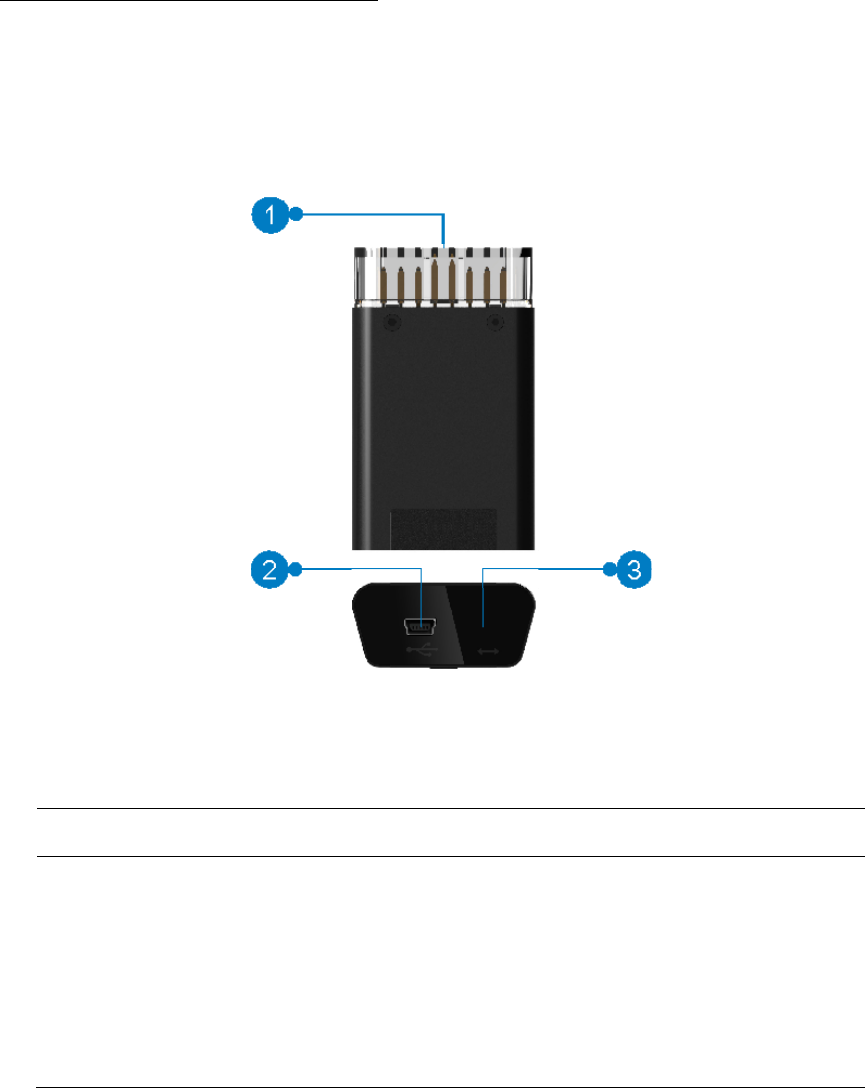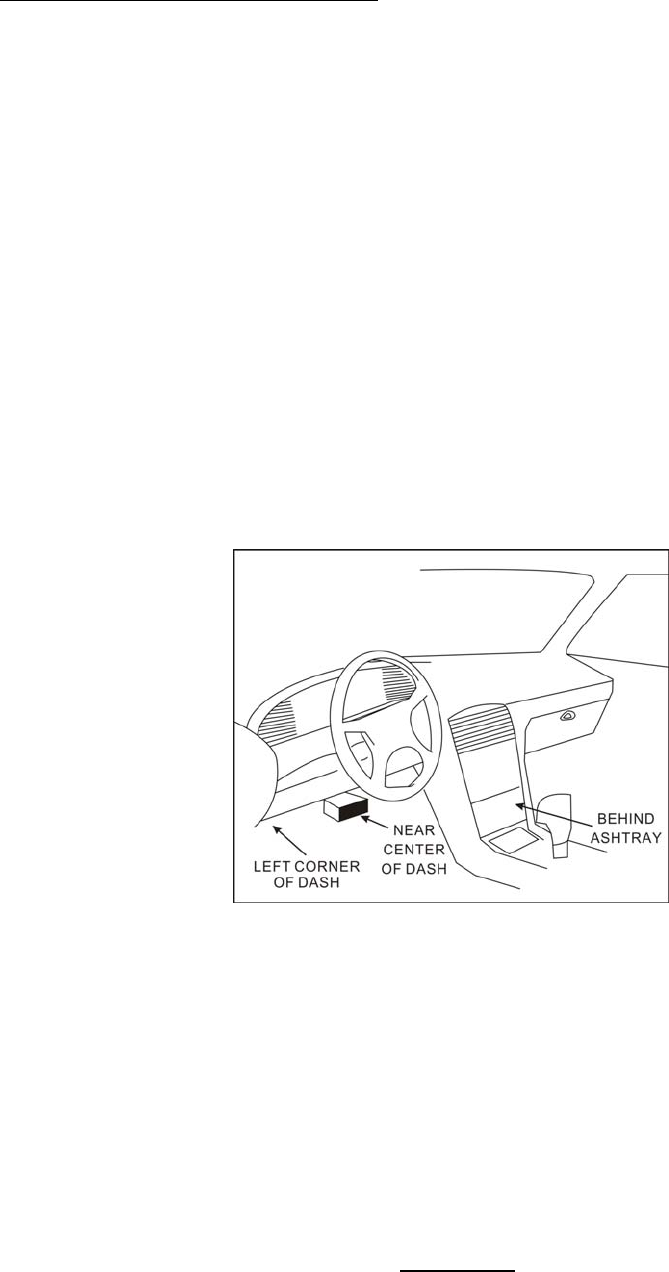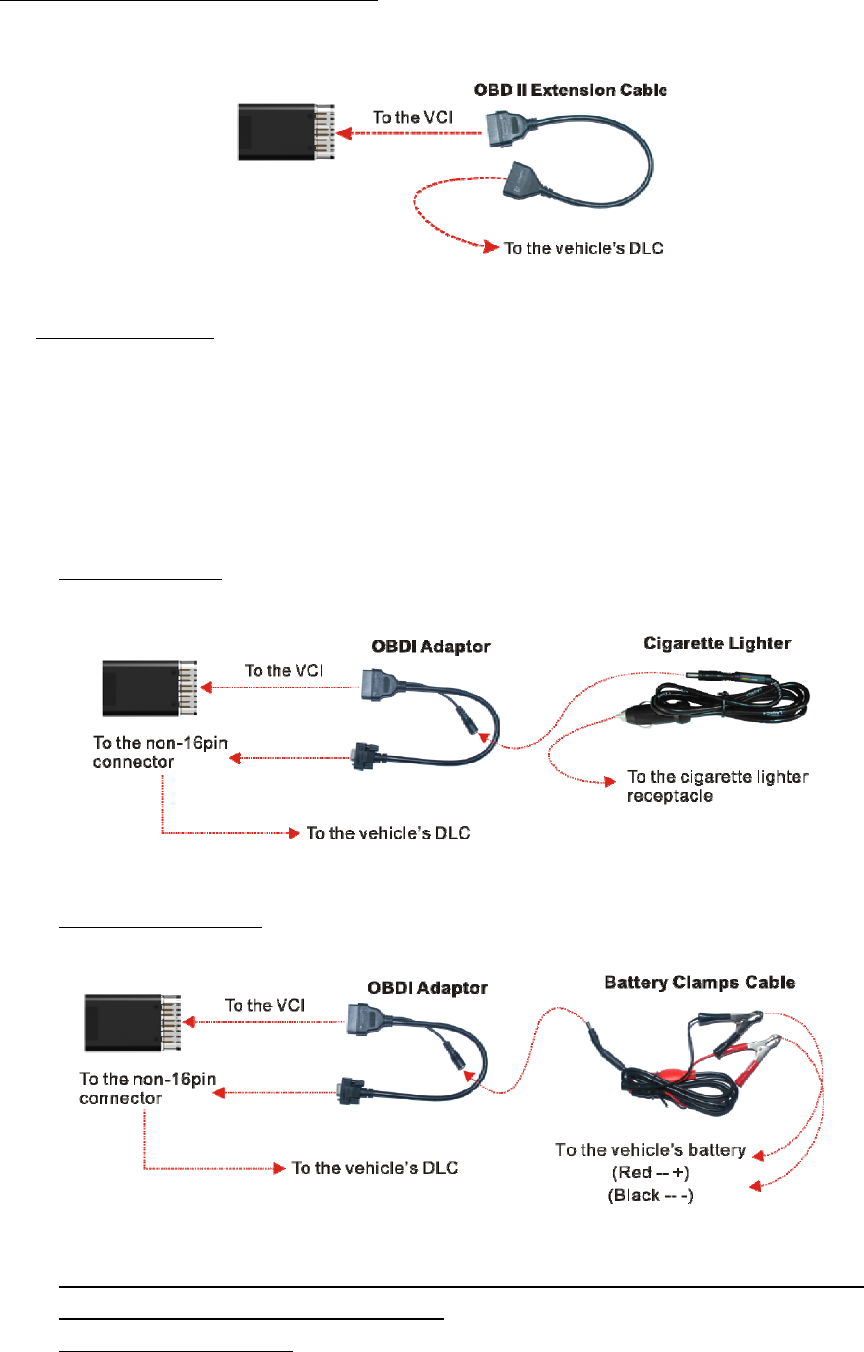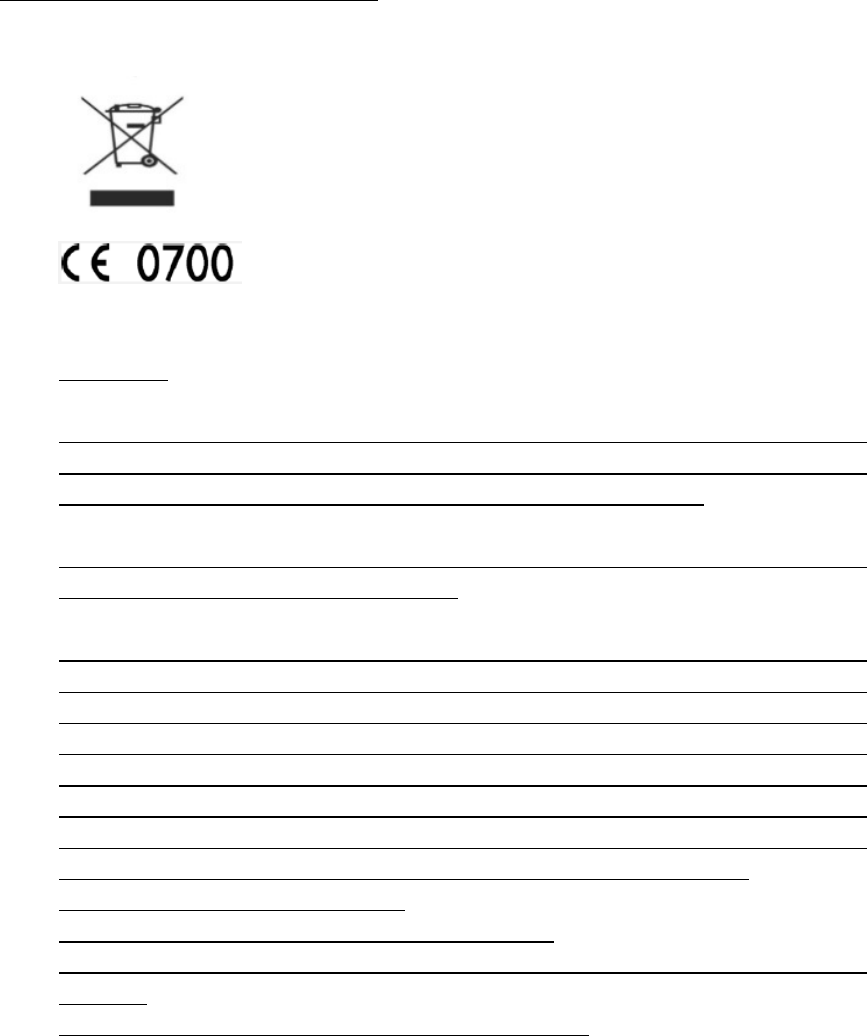Launch Tech DS301 Automotive Diagnosis Terminal User Manual
Launch Tech Co., Ltd. Automotive Diagnosis Terminal Users Manual
Users Manual

Automotive Diagnosis Terminal
(DBSCar III)
User Manual
(V1.0)
Model No.: DS301
Launch Tech Co., Ltd.

1. Automotive Diagnosis Terminal (DBSCar III)
Fig. 1-1 Diagnostic connector (Only applies for 12V cars)
①OBD-16 diagnostic connector To connect on vehicle’s OBD2 DLC.
②Mini USB port For connecting the USB cable to the diagnostic tool.
③Mode indicator It has three different modes:
y It illuminates red when the connector is plugged into
the vehicle’s DLC.
y It illuminates blue if the connector is communicating
with the vehicle via Bluetooth.
y It illuminates green when the connector is connected
to the diagnostic tool via USB cable.
2. Technical Parameters
¾Working voltage: DC 9 -18V
¾Average working current: About 85mA
¾Standby current: About 55mA
¾Working temperature: -10 to 50℃
¾Storage temperature: -30 to 70℃
¾Storage humidity: <80%
¾Working humidity: <60%
Launch Tech Co., Ltd.

3. Connections
3.1 Preparation
y Turn on the vehicle power supply.
y Throttle should be closed at its close position.
3.2 DLC location
The DLC (Data Link Connector or Diagnostic Link Connector) is typically a standard 16 pin connector
where diagnostic code readers interface with the vehicle’s on-board computer. The DLC is usually
located 12 inches from the center of the instrument panel (dash), under or around the driver’s side for
most vehicles. If Data Link Connector is not located under dashboard, a label should be there telling
location. For some Asian and European vehicles, the DLC is located behind the ashtray and the ashtray
must be removed to access the connector. If the DLC cannot be found, refer to the vehicle’s service
manual for the location.
Fig. 3-1
3.3 Vehicle connection
The method used to connect the diagnostic connector to a vehicle’s DLC depends on the vehicle’s
configuration as follows:
y A vehicle equipped with an OBD II management system supplies both communication and 12V power
through a standardized DLC.
y A vehicle not equipped with an OBD II management system supplies communication through a DLC
connection, and in some cases supplies 12V power through the cigarette lighter receptacle or a
connection to the vehicle battery.
Follow the steps mentioned below to connect OBD II vehicle:
1. Locate vehicle’s DLC socket.
2. Plug the diagnostic connector into the vehicle’s DLC socket (It is suggested to use the OBD II
extension cable to connect the diagnostic connector and DLC socket.).
Launch Tech Co., Ltd.

Fig. 3-2
For non-OBDII vehicle, proceed as follows:
1. Locate vehicle’s DLC socket.
2. Select the corresponding non-16pin connector.
3. Plug the non-16pin end of the connector into the DLC socket, then connect the other end to the OBD I
adaptor, and then tighten the captive screws.
4. Connect the other end of the adaptor to the included diagnostic connector.
5. To supply power to OBD I adaptor from:
A. Cigarette Lighter: Connect one end of the cigarette lighter cable to vehicle’s cigarette lighter
receptacle, and the other end to the power jack of OBD I adaptor.
Fig. 3-3
B. Battery Clamps Cable: Connect one end of the battery clamps cable to vehicle’s battery, and the
other end to the power jack of OBD I adaptor.
Fig. 3-4
Automotive Diagnosis Terminal (Model DS301) is in compliance with the essential Requirements and
other relevant provisions of Directive 1999/5/EC.
Environment friendly disposal
Launch Tech Co., Ltd.

FCC Caution:
This device complies with part 15 of the FCC Rules. Operation is subject to the following two
conditions: (1) This device may not cause harmful interference, and (2) this device must accept any
interference received, including interference that may cause undesired operation.
Any Changes or modifications not expressly approved by the party responsible for compliance could
void the user's authority to operate the equipment.
This equipment has been tested and found to comply with the limits for a Class B digital device,
pursuant to part 15 of the FCC Rules. These limits are designed to provide reasonable protection
against harmful interference in a residential installation. This equipment generates uses and can
radiate radio frequency energy and, if not installed and used in accordance with the instructions, may
cause harmful interference to radio communications. However, there is no guarantee that interference
will not occur in a particular installation. If this equipment does cause harmful interference to radio or
television reception, which can be determined by turning the equipment off and on, the user is
encouraged to try to correct the interference by one or more of the following measures:
-Reorient or relocate the receiving antenna.
-Increase the separation between the equipment and receiver.
-Connect the equipment into an outlet on a circuit different from that to which the receiver is
connected.
-Consult the dealer or an experienced radio/TV technician for help.
You can help protect the environment!
Please remember to respect the local regulations:
hand in the non-working electrical equipments to
an appropriate waste disposal centre.
Launch Tech Co., Ltd.
The device has been evaluated to meet general RF exposure requirement.
To maintain compliance with FCC’s RF exposure guidelines, this equipment should be installed and
operated with a minimum distance of 20cm between the radiator and your body.